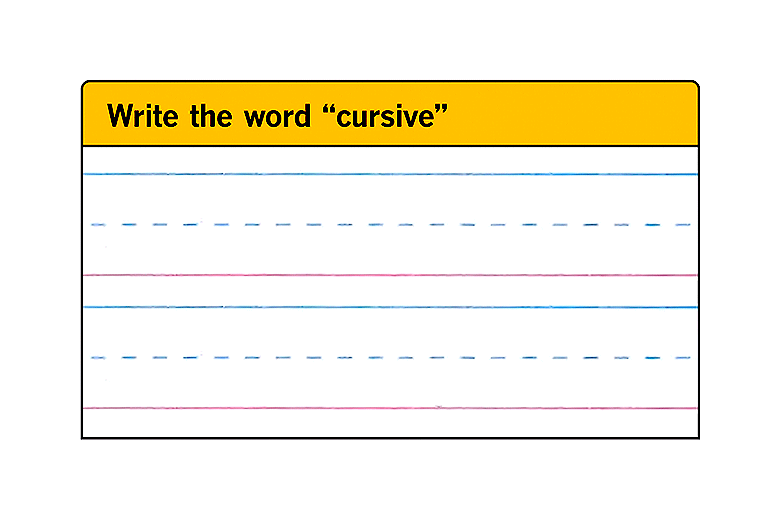Rx for Poor Penmanship at Hand for Doctors?
- Share via
Surgeons at Riverside County Regional Medical Center will soon start a pilot program to deal with a cliched but common curse -- poor penmanship that at minimum causes delays and, at worst, death.
Instead of scrawling notes on patients’ charts, doctors at the Moreno Valley hospital will use Palm Pilots to create clean, typed notes.
“This is one of these things which, when you first hear it, sounds kind of mundane,” said hospital Chief Executive Douglas Bagley. “If you think about it a little more deeply ... it’s kind of a chronic problem.”
Theories abound about why many physicians scribble: In medical school, they take so many notes that speed -- not legibility -- counts most; HMOs have increased the number of patients they see every hour; or that doctors -- like everyone else -- are afflicted with the general deterioration of penmanship.
Regardless, a doctor’s handwriting can be a life-and-death matter. In 1995, a Texas man who was supposed to receive a heart medication instead was given a blood-pressure drug with a similar name because a pharmacist misread a cardiologist’s scrawl. Worse, the patient was instructed to take eight times the regular dose because of the mixup. He suffered a heart attack the next day and died within two weeks.
Health officials believe that poor handwriting is behind some of the preventable medical errors suffered by more than 1 million patients annually. Most commonly, poor penmanship creates delays for nurses, pharmacists and others who have to track down the doctor to decipher the writing.
“That’s from experienced nurses. More dangerous is the inexperienced nurse who tries to read your writing and reads the wrong thing,” said Dr. Stephen Klasko, vice dean of the Drexel University College of Medicine in Philadelphia, which requires physicians and third-year medical students to use Palm Pilots to keep charts. “I’m as guilty as anybody. I write horribly. Five [percent] to 10% of my prescriptions get a call back from the pharmacist. That means patients are waiting and not getting good service.”
Health insurance, government and hospital officials are tackling the issue. Cedars-Sinai in Los Angeles offered penmanship classes to its worst offenders, and, since July 1, Florida has required that prescriptions be typed or printed in noncursive script.
But technological solutions, like the one being tested at Riverside, are at the forefront and are seen as the most effective. One study in the Northeast found that pharmacists’ calls to physicians seeking clarification dropped 30% after the doctors started writing on hand-held Blackberrys.
“As far as using information technology, there is no question that it can improve patient safety,” said Dr. Paul Gluck of Baptist Hospital in Kendall, Fla., a board member of the National Patient Safety Foundation.
The nation’s 5,800 hospitals use a patchwork of technologies: Some are completely wireless; others are just starting. In many examination rooms, doctors writing notes in bulging patient folders remains the norm.
“There’s a tremendous amount of information collected in health care. That starts with you or me seeing our doctor and her writing notes on a piece of paper,” said Sam Karp, spokesman for the California HealthCare Foundation. “Think about how that information can possibly get to everywhere it needs to get to. It’s a daunting task when it starts on a piece of paper.”
At Riverside, chief of surgery Dr. Arnold Tabuenca noticed the recurring problem of illegible writing. “We put in a lot of effort to make sure everyone will write legibly, but it’s almost impossible to accomplish,” he said.
So Tabuenca, who already uses a Palm Pilot to take notes on trauma patients in the emergency room, proposed the pilot project. Starting next month, residents -- who take most of the notes -- will type into small keyboards attached to Palm Pilots. These devices will beam the data to printers, which will create legible notes for patients’ medical files, Tabuenca said.
Dr. Michelle Atchison, a fourth-year resident in Riverside’s surgery department, is looking forward to the trial run. It may take longer to use the devices initially, but it should be a time-saving tool in the end, she said.
“In some ways, they can make life easier, especially in terms of legibility -- that’s an issue with doctors’ handwriting,” she said.
Atchison, who has used a Palm Pilot for more than three years, noted that many of the residents already use the devices as their personal calendars. Across the country, hand-held data recorders are being used to solve storage problems and stop doctors from prescribing a drug that a patient is allergic to, or from prescribing too large a dose.
Still, hurdles remain. “We, as docs have notoriously bad patience,” Klasko said.
When Drexel introduced the Palm Pilots, a fifth of the physicians refused to use them initially, he said. A similar number tried to use the devices, but were frustrated because they didn’t instantly understand or if there were bugs.
Another problem is cost. At Riverside, the surgeons are buying about 15 units and keyboards at $170 per set, using money they contribute to a training fund. Fully wiring a hospital can cost millions, and there is no immediate return.
“The real problem is getting boards of directors committed to this,” Gluck said.
Some are committing funding on the belief that it will save their hospitals more in the long run. Baptist Health in southern Florida, the hospital network where Gluck works, plans to spend $50 million to computerize all of the systems in two hospitals.
Empire State Blue Cross & Blue Shield in New York state has offered to increase reimbursements to defray costs if a hospital installs a sophisticated electronic prescription system that catches drug allergies and dosing mistakes. A study at Brigham and Women’s Hospital in Boston found that the systems reduced error rates by 55%.
Gluck said such improvements are key to improving patient care.
“When technology is available, when it is utilized by the medical staff, it can significantly reduce the number of medical errors and significantly improve treatment,” he said. “[It] gets patients out of the hospital quicker and healthier.”
More to Read
Sign up for Essential California
The most important California stories and recommendations in your inbox every morning.
You may occasionally receive promotional content from the Los Angeles Times.











